Are you tired of constantly chasing after leads?
Do you wish there was a way to automate your marketing efforts?
Look no further than drip campaigns!
In this ultimate guide, we’ll cover everything you need to know about this type of email marketing.
Whether you’re a seasoned marketer or just getting started with email content, this guide will provide you with the tools and knowledge you need to take your email marketing efforts to the next level.
What is a drip campaign?
A drip campaign is a marketing strategy that involves sending a series of automated, targeted email messages to prospects or customers over a period of time.
The goal of a drip campaign is to build a relationship with your audience and move them closer to a desired action through a series of messages.
This could be making a purchase or signing up for a service.
Each message in a drip campaign should be designed to be relevant and valuable to the recipient, eventually increasing your click-through rate and conversions.
Typically, the messages are delivered via email. However, they can also be delivered through other channels such as social media, text messaging, or push notifications.
Ensure your drip emails reach the recipient’s inbox thanks toBouncer
Drip campaigns vs email marketing automation campaigns
Drip campaigns and automated email campaigns are both types of email marketing campaigns that use automation to send messages to subscribers.
However, there are some key differences between the two that you should be aware of.
#1 Content
💧 Drip campaigns: include a series of messages that are designed to educate, inform, or nurture subscribers over time. They help nurture customer relationships and improve the customer journey.
⚙️ Automated campaigns: focused on a specific topic or goal, such as promoting a sale or announcing a new product.
#2 Personalization
💧 Drip campaigns: often highly personalized, with messages tailored to a subscriber’s interests or preferences.
⚙️ Automated campaigns: can also be personalized, but they are often more generic and focused on a broader audience.
#3 Flexibility
💧 Drip campaigns: more flexible than automated email campaigns, as they can be adjusted or modified based on a subscriber’s behavior or preferences over time.
⚙️ Automated campaigns: typically more rigid, as they are triggered by a specific event or action.
Overall, both drip campaigns and automated email campaigns can be effective tools for engaging with your audience and driving conversions.
Now let’s get back to the first campaign type…
Why use an email drip campaign?
“Alright, why would I want to spam anybody with a series of emails?”
Firstly, it’s not spamming. Secondly, it’s not just any emails. Also, there are different types of drip campaigns.
Drip campaigns are a highly effective way to automate and personalize your marketing and communication efforts.
Here are some specific benefits you could reap from this email marketing type.
Increased Engagement
Email drip campaigns are designed to keep the audience engaged with your brand.
When you send personalized messages to your audience, you can build trust and strengthen your relationship with them.
As a result, your audience is more likely to open and engage with your emails.
Remove toxic email addresses from your email list withBouncer .
Improved Conversion Rates
Moving forward, such campaigns are also effective in converting prospects into customers.
You can convince your audience to take the desired action by sending messages that specifically address their pain points and meet their needs.
The action could be things like making a purchase or signing up for a service. Based on user actions, they get different types of emails.
Time Savings
Another benefit is the time saved on sales and marketing emails. With email drip campaigns, you can literally “set it and forget it”.
Automating the process means that you can free up your valuable time and resources for marketing and sales team.
This fact lets you devote your attention to other crucial aspects of your business.
Personalization
If what we’ve mentioned so far isn’t enough, here are even more perks of having a good drip campaign strategy.
Drip campaigns can be tailored to individual leads based on their previous behavior and preferences, providing a more personalized marketing and sales experience.
You can personalize just about anything, from follow-up emails to abandoned cart emails.
When you personalize your emails, you’re putting your business at a big advantage. Take a look:
- 80% of eCommerce users only choose companies that personalize their experience,
- 72% of consumers say they only respond to messages aimed directly at them,
- 63% of people in one survey said they never respond to non-personalized emails,
- 74% of customers become frustrated when their email communication experience isn’t personalized.
Do you get what we mean?
Cost-effectiveness
It goes without saying that drip campaigns are a cost-effective way to engage with leads and customers.
All because everything you do is set up the emails in advance and turn them on autopilot – literally.
It’s like a one-time investment that keeps on giving back continuously, freeing up time for your sales reps.
Verify email addresses in your email list easily withBouncer .
When should you use drip campaigns?
Drip campaigns are ideal for a range of situations.
Here are some scenarios in which you should consider using them.
Lead Nurturing
Drip campaigns can be used to nurture leads and move them through the sales funnel with an effective email sequence campaign.
When you start delivering relevant content over time, you can build trust with your leads and keep your brand top of mind.
For example, you could create a series of lead nurturing campaigns that provide educational materials or address common pain points your leads may have. You can then send personalized educational content to every email address.
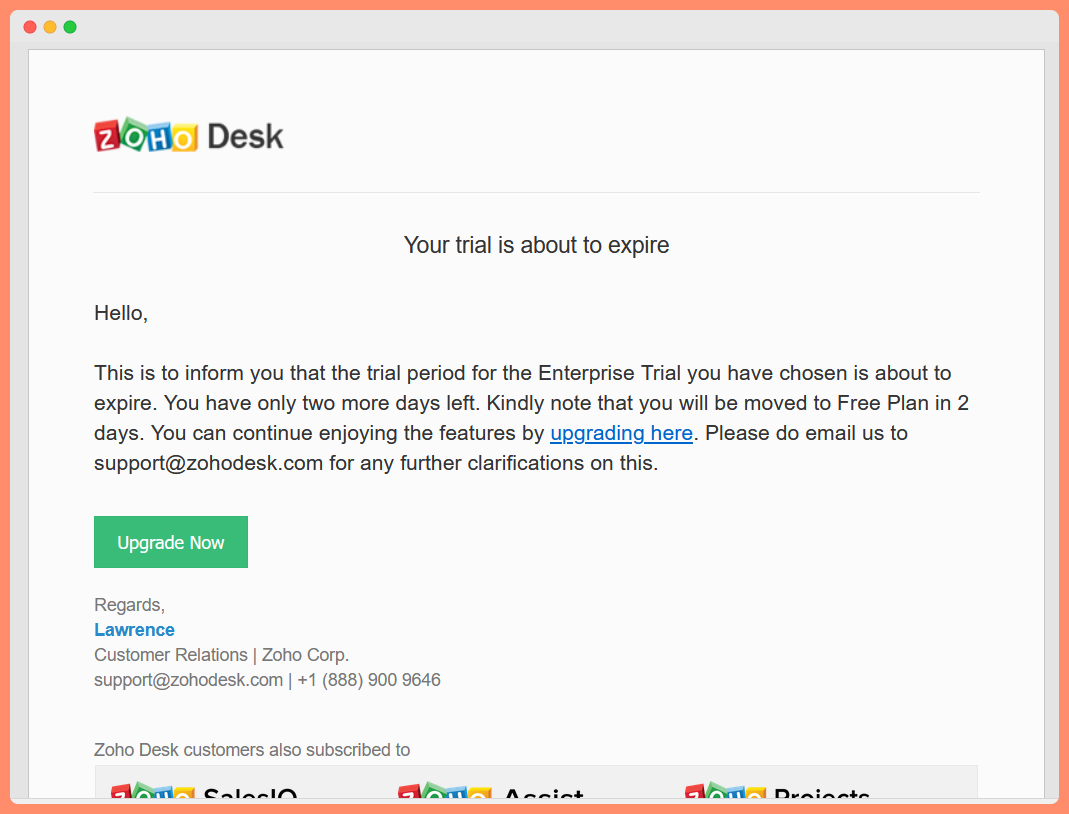
Onboarding
Drip campaigns can also be used to onboard new customers and help them get started with your product or service.
Thanks to providing guidance and support over time, it’s easy to improve customer retention and satisfaction as well as your overall email marketing metrics.
As an inspiration, we suggest creating a series of emails that walk new customers through the setup process. You could also offer tips and best practices to increase customer engagement. The possibilities are endless.
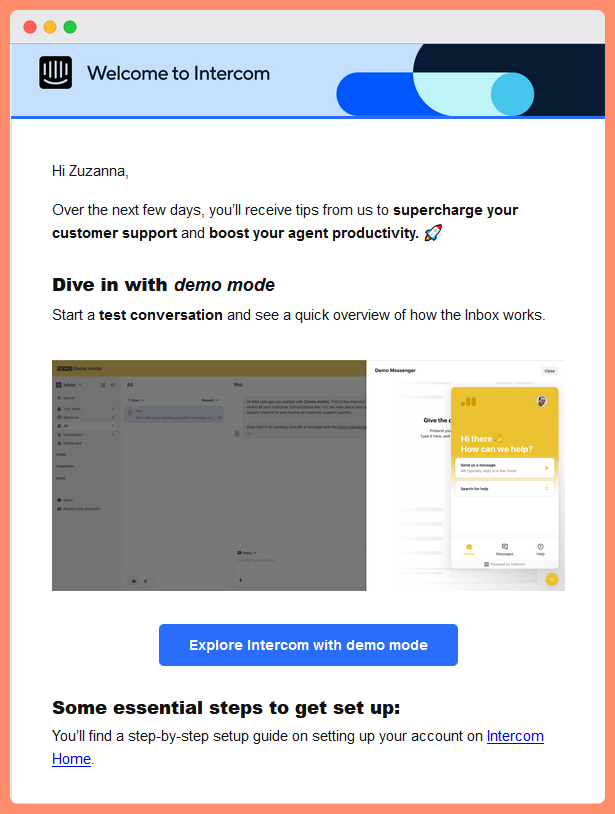
Product Promotion
Another great use case is promoting products/services and driving interest by focusing on.
Start delivering interesting, educational content over time, and watch the likelihood of people buying from you hit an all-time high. Instead of high bounce rates, you get loyal customers.
Need a specific example? Why not test a series of emails demonstrating how your current customers are benefitting from your products/services?
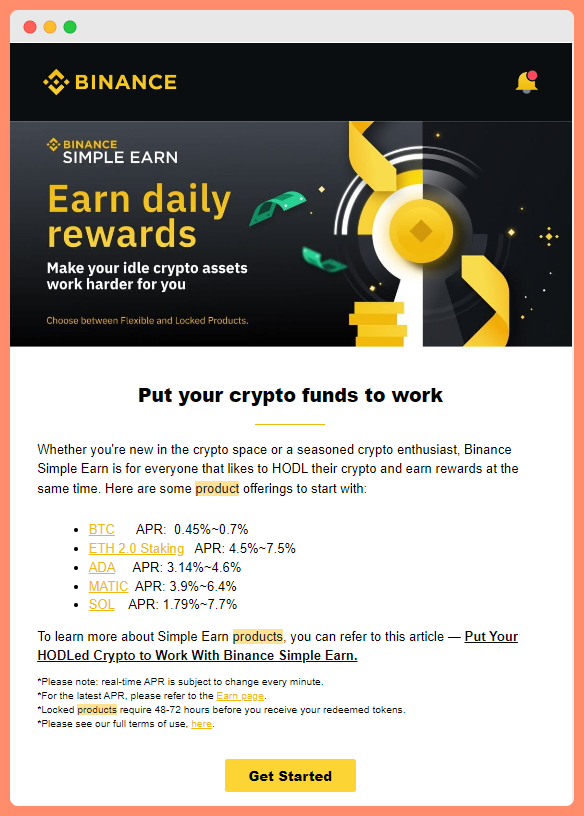
Relationship Building
As you can see, the use cases are pretty varied. And here comes another one.
You can use drip emails when you want to build relationships with customers and/or prospects.
We recommend sending a series of personalized and relevant messages over time. For the best results, create audience segments and different groups of your target customers.
This way, you can establish a connection with your audience, deepen their trust in your brand, and increase their loyalty.
Lots of pros, no cons.
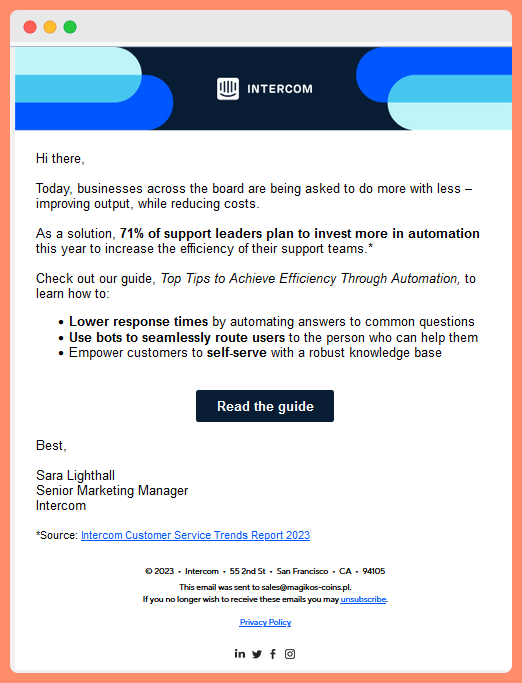
Cross-Selling/Upselling
Another way to use drip campaigns? Say no more!
Make use of them to promote additional products or services to your existing customers. This is one of the common types many brands use drip campaigns, to add more value in their sales cycle.
Your well-targeted offers and promotions delivered to your customers’ inboxes will let you increase revenue and customer lifetime value.
Sound good?
For example, you could create a sequence of emails highlighting related products or services based on a customer’s previous purchases or behavior.
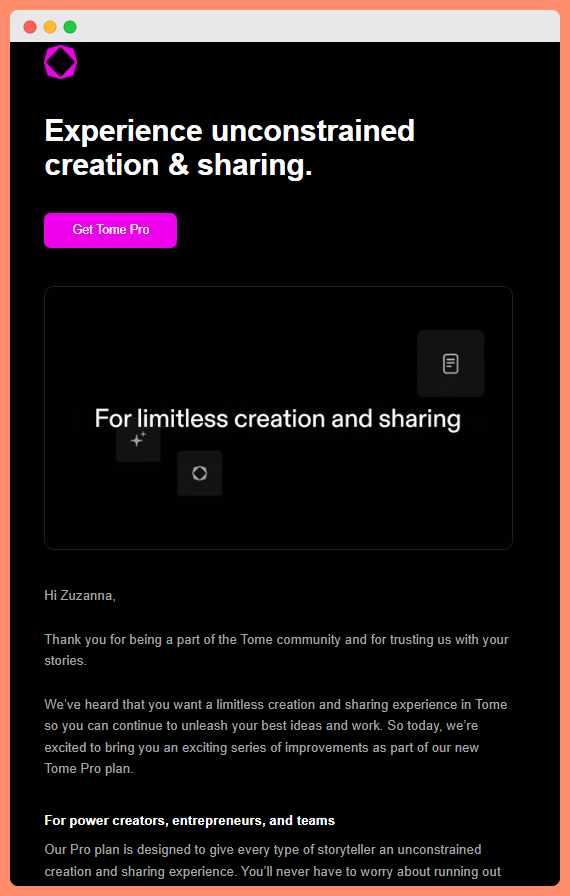
Clear your email list with a reliable email checker – useBouncer .
How to set up a drip campaign in 7 steps
Now, let’s cut to the chase.
It’s time you learn how you can reap the benefits of drip emails and use them for various purposes.
Find out how to create your first drip campaign in these 7 easy to follow steps:
Step 1: Set Up Your Goals
The first step in setting up a drip campaign is to set your goals.
What do you want to achieve with this campaign? What are your SMART objectives?
For example, do you want to nurture leads, onboard new customers, promote an event, or cross-sell/upsell products?
Setting your goals will help you determine the content and messaging of your campaign.
Step 2: Define Your Audience
Next, you should properly define your audience.
Who do you want to target with this campaign? Who is going to be the recipient of your drip emails?
For instance, are you targeting new leads, existing customers, or a specific segment of your audience?
It’s important to define your audience to decide on what exactly will or should be included in your drip emails.
Step 3: Choose Your Tool
Once you’ve thought through your audience and goals, next comes the time to pick email marketing software.
You will need it to create and send your drip campaign.
There are many options available, such as Mailchimp, Zapier, HubSpot, and Constant Contact.
Choose a tool that fits your budget and requirements.
Some questions you might want to ask yourself when choosing a solution include:
- What kind of automated drip campaigns can I create with this marketing automation software?
- Are there any drip campaign examples or templates available that I can use as a starting point?
- Can I customize the email drip marketing messages for each campaign to better target my audience?
- Does this software provide analytics and reporting on the effectiveness of my drip campaigns?
- Can I create a welcome drip campaign to engage new subscribers and introduce them to my brand?
- How easy is it to set up and manage drip campaigns with this software?
- Does this software integrate with other tools I use, such as my CRM or social media management platform (e.g., a LinkedIn scheduling tool)?
- Are there any limitations on the number of contacts or emails I can send with this marketing software?
- Can I personalize the content and messaging of my drip campaigns based on user behavior or demographics?
- Have other businesses seen success with this software in creating effective drip campaigns?
Step 4: Create Your Campaign
The fourth step is to actually create your drip campaign.
Depending on the email marketing tool you choose, the process may vary.
However, in general, you’ll need to create a series of emails that will be sent out over a period of time.
Each email should have a specific goal and provide value to your audience.
Step 5: Set Your Triggers
Your next task, after creating emails, is to configure all the triggers.
Triggers are the actions that will start the drip campaign.
For example, if you’re running a lead nurturing campaign, the trigger might be when someone fills out a form on your website.
If you’re running an onboarding campaign, the trigger might be when someone signs up for your product or service.
You may be able to set up triggers based on a variety of actions, such as clicks, opens, and downloads.
Everything depends on the email marketing software you end up signing up for.
Step 6: Specify Your Schedule
We are slowly approaching the end of the process.
At this point, pretty much everything is sorted, except for… the timing and schedule.
When will each email in the drip campaign be sent? How much time should be between each email?
These settings should be tailored to your personal goals and audience needs or preferences.
For instance, you may want to send emails daily, weekly, or monthly. What’s more, it could be in the mornings, afternoons or evenings. It’s up to you to decide.
Step 7: Test and Refine
Finally – the grand finale.
The very next stop on the way is to… test and refine your drip campaign.
Before you launch your campaign, send test emails to ensure that everything is working properly.
After you launch your campaign, monitor its performance and make adjustments as needed.
Once it finishes, be sure to analyze all your insights and make conclusions for improvements or fixes.
If you notice that, for instance, open rates are low, you may need to adjust your subject lines or messaging.
And… that’s it! Follow this 7-step guide and never wonder how to properly create a drip campaign ever again.
Land smoothly in your recipients’ inboxes withBouncer .
Tips for a successful drip campaign
Now, let us share some top tips and tricks to creating successful drip campaigns. These will help you a lot, especially if you’re a newbie to this topic:
- Define Your Destination
Be clear about what you want to achieve with your drip marketing campaign and who your target audience is.
- Content is King (and Queen)
Create a content plan that aligns with your goals and speaks to your target audience. You can use a template content plan if necessary. Make sure your content is engaging, informative, and relevant to your audience.
- Pick the Right Ride
Select a drip email marketing software that allows you to automate your campaigns, track your results, and measure your ROI.
- Divide and Conquer
Divide your audience into different groups based on their behavior, interests, and demographics. This will allow you to tailor your content and messaging to each group.
- A Subject Worth Reading
Your subject line is the first thing your audience sees in their inbox. Make sure it’s attention-grabbing, informative, and relevant to your message.
- All About Them
Use your audience’s name and other personal details to create a personalized experience for them.
- Timing is Everything
Schedule your emails to be sent at the right time, so they land in your audience’s inbox when they are most likely to be opened and read.
- Testing, Testing, 1, 2, 3
Test your subject lines, content, and timing to see what works best for your audience.
- Call to Action Heroes
Encourage your audience to take action by including clear call-to-actions in your emails.
- Analyze This
Analyze your campaign’s results to see what worked and what didn’t. Use this information to improve your future campaigns.
There you have it! Tips for effective email drip campaigns.
Increase your email marketing ROI withBouncer .
Read also:
Drip email marketing guide
Secrets to effective drip campaigns
Final thoughts
And there you have it! Now you’re ready to embark on your drip email journey with a guarantee of success!
We hope you enjoyed this article.
If you did – be sure to check out our other releases. We’ve got many more interesting guides, tutorials, and more.
And should you be on the lookout for a reliable email validation campaign – our solution Bouncer is ready to help you out.
Thanks for coming along and, hopefully, see you in our next articles!
FAQ
What are drip marketing campaigns?
Drip marketing campaigns are automated sequences of emails that are sent to current and prospective customers over a period of time. These campaigns are designed to nurture leads and build relationships with potential customers.
What is the purpose of a drip marketing campaign?
The purpose of a drip marketing campaign is to educate, engage and convert potential customers. By sending a series of targeted and relevant drip emails, businesses can stay top of mind and build trust with their audience, ultimately driving more conversions.
What are some examples of drip campaign emails?
Some examples of drip campaign emails include welcome emails, product education emails, promotional emails, and re-engagement emails. These emails can be customized to suit your business needs and goals.
What are some best practices for a successful drip email campaign?
Some best practices for a successful drip email campaign include segmenting your audience, personalizing your emails, testing and optimizing your campaigns, and providing value to your audience. It’s also important to keep your messaging consistent and relevant throughout your campaign.


